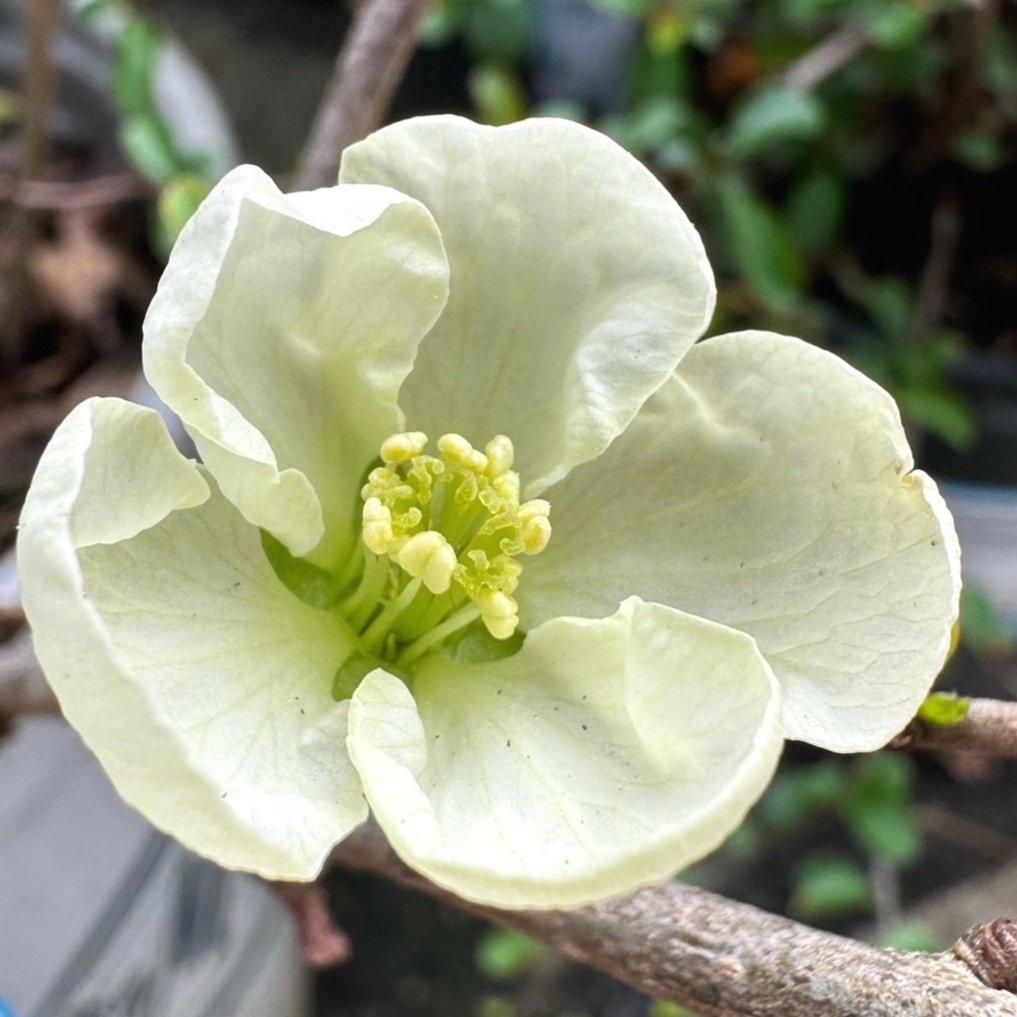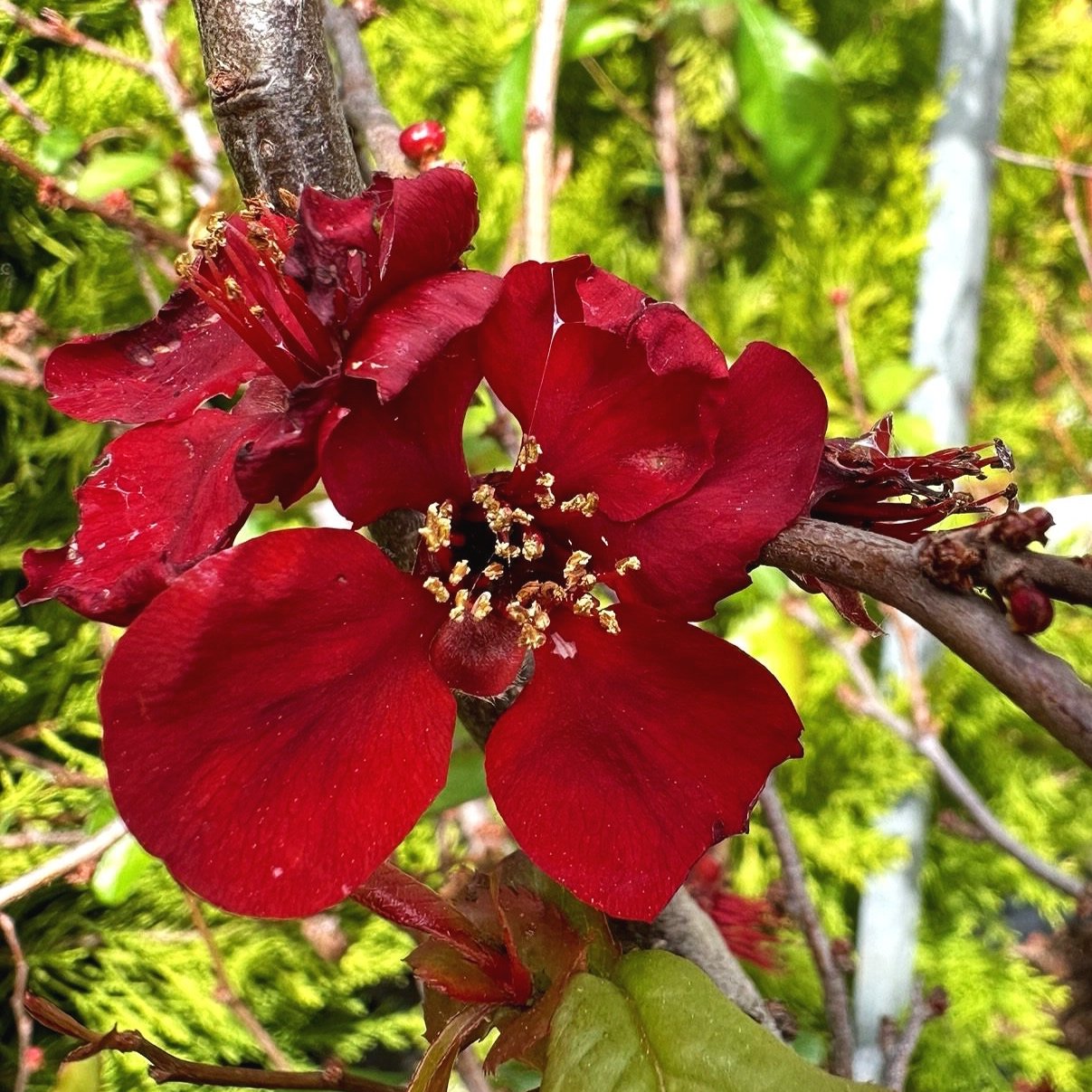Charming Chaenomeles – Flowering Quince
Charming Chaenomeles – Flowering Quince
Swelling Buds on a ‘Blood Red’ Flowering Quince
Introduce a brilliant splash of color to a drab winter garden with the profusion of bright orange-red, salmon, apricot, deep scarlet red, pale pink, bright white, or yellow blooms of a Flowering Quince. Chaenomeles bloom in late winter to early spring and are one of the first shrubs to bloom in spring. Brilliant buds begin to swell and appear in February and March along the thorny, bare branches of the multi-stemmed deciduous shrub, which has a sprawling, upright growth habit. Depending on the variety, the 2-inch flowers open in succession shortly after bud swell in either single or double-flowered forms and will continue their display for 2-5 weeks, with each flower lasting for up to 10 days.
As the flowering time draws to a close, the foliage emerges red-bronze then ages to a glossy, dark green in summer. The oval leaves have serrated edges and grow to about 3 inches long. Most varieties will form yellowish-green fruits that can be used for making liqueurs, as well as marmalade and preserves.
Beyond their ornamental value, flowering quince also holds cultural significance. In traditional Chinese culture, the quince symbolizes luck, prosperity, and longevity, adding a layer of symbolism to its already enchanting presence in the landscape. Flowering quince branches are often cut with swollen flower buds and forced to bloom indoors in warm water, used in Ikebana arrangements, and are prized by bonsai collectors. Native to China and Japan, they are one of the longest used of all landscape plants, having been cultivated for thousands of years in Asia.
Another charming quality of flowering quince is its versatility. Whether used as a focal point in a garden bed, a hedge along a pathway, or a colorful addition to a mixed border, these shrubs can adapt to various settings with ease. Additionally, their ability to thrive in both full sun and partial shade makes them suitable for a wide range of gardens.
Culture:
Plant in full sun to light shade in well-drained loamy soil, rich in organic matter. Best with regular summer water. Chaenomeles are drought tolerant after establishment. Fertilize in early spring for the fastest growth. Prune just after flowering, since the shrubs bloom on old wood; summer or winter pruning will reduce the quantity of blooms the following spring. Prune yearly to correct branching issues or to shape. Avoid extreme pruning, as this will stimulate rapid, poor quality growth.
Flowering Quince is considered deer and rabbit resistant in most gardens and attracts hummingbirds and butterflies.
Some of our favorites include:
‘Cameo’: 2-3’ x 2-3’. Large, double, soft apricot pink flowers.
and:
Chaenomeles ‘Pink Storm’ :
Grows 3-5’ x 3-5’.
Large (2-3”) double, bright pink flowers on thornless foliage. This variety does not fruit.
Chaenomeles ‘Jet Trail’ :
Grows 2-3’ x 2-3’.
Pure white 1 ½” flowers with golden stamens.
Chaenomeles ‘Blood Red’:
Grows 5-6’ x 5-6’.
Blood red single flowers.




